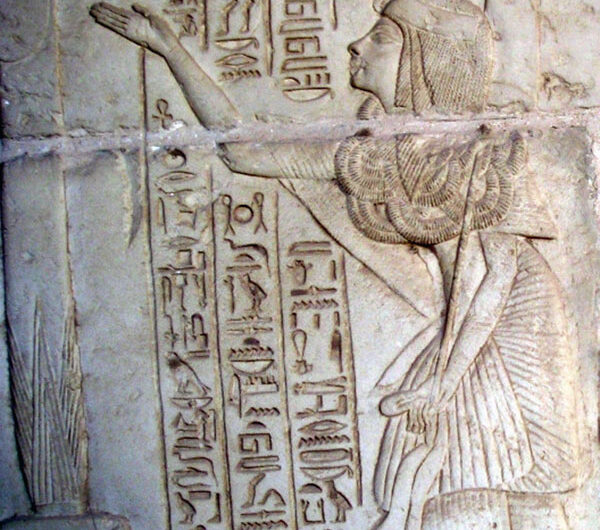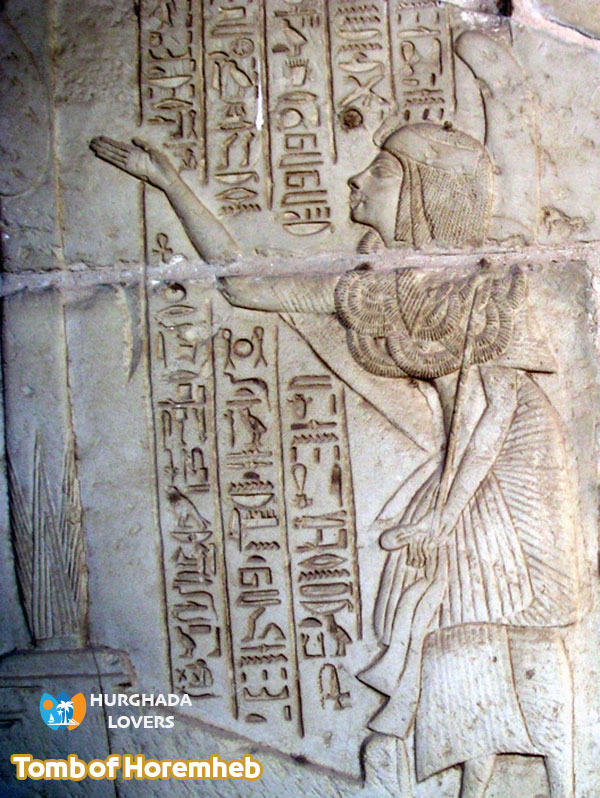Tomb of Horemheb in Saqqara Egypt – Egyptian Tombs
Facts and history of the Pharaonic civilization “Ancient Egypt History” for building Egyptian tombs Pharaonic in the civilization of ancient Egypt, the eighteenth dynasty and more Tomb design, visiting hours, entrance ticket prices…
It was built before King Horemheb took power in ancient Egypt “Ancient Egyptian Government” and received the Coronation of the Pharaohs.
It is located in the Saqqara necropolis near the Memphis area.
Although the tomb was not used to bury King Horemheb, the most famous Egyptian Pharaohs kings of the Eighteenth Dynasty of Egypt in The New Kingdom, it was used to contain other things.
Learn about the artifacts found inside the tomb. It is known that King Horemheb has the tomb of King Horemheb within the tombs “Tomb of Horemheb | KV57” of the Valley of the Kings in Luxor..
Tomb of Horemheb Facts
King Horemheb was the last king of the 18th Dynasty and ruled from 1323 to 1295 BC..
Horemheb was one of the greatest military leaders in the Military of ancient Egypt during the reign of King Tutankhamun and he has Tomb of Tutankhamun | KV62, he even held the title of Viceroy of the entire land.
Although the king’s tomb was built before he assumed power, he was not buried in it, because he built Tomb 57 in Thebes for the purpose of burying him in it..
But the tomb was used to bury his two wives, Queen Mutnedjmet and Queen Amenia, the most famous queens of Pharaonic Egypt “Female Pharaohs“..
The tomb is located approximately 500 metres south of the Pyramid of Djoser + The Southern Tomb in King Djoser funeral complex, built by King Djoser of the Third Dynasty of Egypt of the Old Kingdom of Egypt, located in Saqqara..
The tomb was discovered in the early 19th century by antiquities thieves..
A number of the looted items were smuggled to museums in Europe and America..
Stages of construction of the tomb of King Horemheb
The king’s tomb came in three stages, which increased in sophistication as Horemheb’s status rose, indicating the development of Architecture in ancient Egypt and the arts of Sculpture in Ancient Egypt.
The first design consisted of an entrance leading to a front courtyard, and the courtyard was a court with columns..
Among the columns inside the tomb is a burial column and three chapels, which are rooms in which the ancient Egyptian deities – Ancient Egyptian gods and Goddesses were given offerings and Food in ancient Egypt as in the Ancient Egyptian religion.
A wall was put up in the front yard with the intention of creating two prayer rooms but they came out to be too small..
A new walled forecourt was also built in front of the monument, and the Fifth Dynasty of Egypt and Sixth Dynasty of Egypt terraces were demolished so that workers could extend this wall..
The burial shaft was then incorporated into the burial chamber, approximately 16 metres away..
The front yard was then closed off by a 7-metre-long pergola..
A series of military appearances and other scenes showing Horemheb performing his duties in the office are carved on the walls of the open hall..
There is another image depicting Horemheb when he was Tutankhamun’s deputy, as well as scenes from the funeral..
Other information about Tomb of Horemheb in Saqqara
The tomb, which is the largest in the New Kingdom necropolis, is located south of the Pyramid of Unas road, which was built during the reign of king Unas.
The tomb was designed in the style of Egyptian Temples in the Great Kingdom..
In the middle chamber inside the tomb came an engraving of the symbol of the sun and resurrection as in the legends of the pharaohs “Egyptian Mythology” and stories of Ancient Egyptian Literature, and the burial chamber was located underground.
The burial chamber is accessed via a vertical shaft..
The remains of a fetus were discovered next to the skeleton of a female believed to belong to Mutnedjmet, the wife of Horemheb..
Other engravings inside the tomb include images of foreign rulers pleading with King Tutankhamun, with Horemheb as an intermediary between them, to learn about social life in ancient Egypt “Social Structure in Ancient Egypt“.
This inscription shows how close Horemheb was to Tutankhamun, and there are other inscriptions of Horemheb receiving the gold of courage from the kings..
In addition to other inscriptions depicting the ritual of opening the mouth, indicating the development of the mummification process among the ancient Egyptians “Mummification in ancient Egypt“, indicating the development of Medicine in ancient Egypt and Ancient Egyptian science.
Facts about Horemheb
Horus Emheb was the last pharaoh of the Eighteenth Dynasty in ancient Egyptian history..
Horemheb was the supreme commander of the Egyptian army during the reign of King Akhenaten and his successors..
He took over the rule of Egypt after the death of Ay and was the Pharaoh of Egypt from 1338 to the end of 1308 BC in the New Kingdom era..
Hor Muhib was a commoner and did not belong to a prominent family in Amlajd, from the town of “Hat Nesut” in the seventeenth district of Upper Egypt.
He was the recruits’ scribe during the reign of Pharaoh Thutmose IV, and then he rose during his reign to the rank of “a capable tutor to one of his daughters,” then he rose to the position of “commander of the cavalry battalions,” and then he rose to the position of “high priest of all the gods of the two lands.”»
Horemheb became the king’s de facto representative in all matters of government, making him “the pharaoh’s representative on earth.”
Tomb of Horemheb in Saqqara. He was given the title of “Raba’at” which expresses the position of deputy he held in the country’s government as “the great director.”“
After ascending the throne, he reformed the Egyptian state, and during his reign official measures were taken against the previous Amarna rulers and their policies. As a result, he is considered the ruler who restored stability to his country after the turbulent and divided Amarna period..
Horemheb demolished Akhenaten’s monuments, reused the rubble in his own building projects, and usurped Tutankhamun’s monuments. Horemheb is believed to have had no surviving sons, as he appointed his vizier Paramis as his successor, who would assume the throne as Ramesses I..
Horemheb is believed to have originally come from the city of Hennis, later known as Ihnaysa, on the west bank of the Nile, near the entrance to the Fayum, as his coronation text officially credits Hennis’ god Horus with installing him on the throne..
Horemheb’s political career first began during the reign of Tutankhamun, where he was depicted alongside this king in his tomb.
His family
Wife: Death of Najmat Aminia
Note: Facts and secrets of the history Tomb of Horemheb in Saqqara will be added soon…
Hurghada Excursions Lovers, Best Travel Agency in Hurghada to provide daily tours to visit the Tourist attractions of Luxor by Hurghada to Luxor Tours and Hurghada to Pyramids Trips. Book online when you come to Hurghada, El Gouna, Sahl Hashish, Makadi Bay, Soma Bay.
Tomb of Horemheb in Saqqara, Egypt | Facts & History Building Pharaonic Tombs

